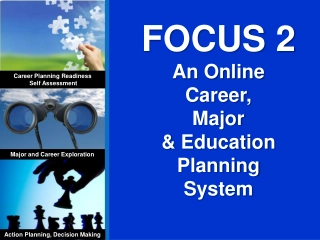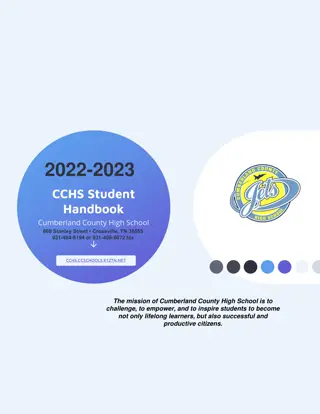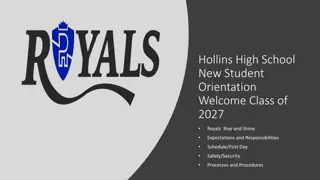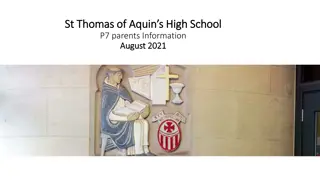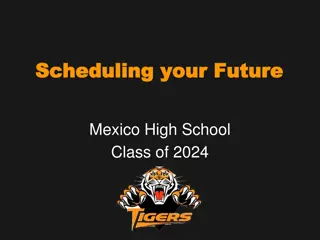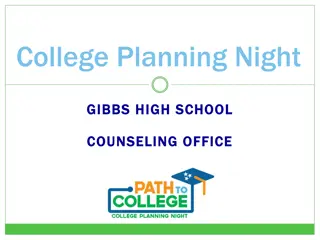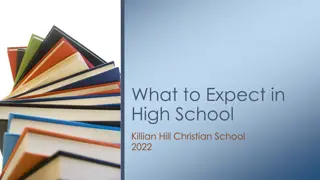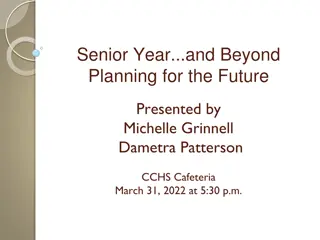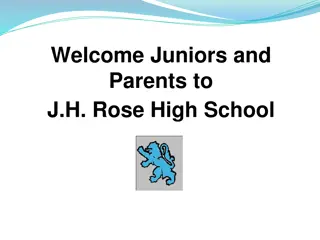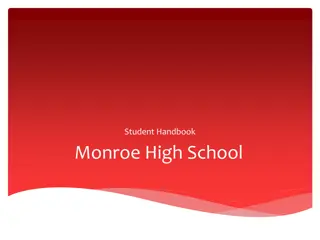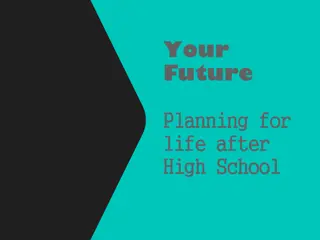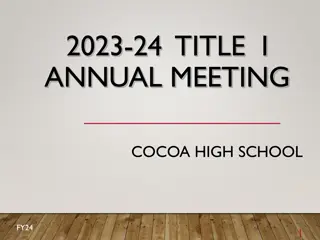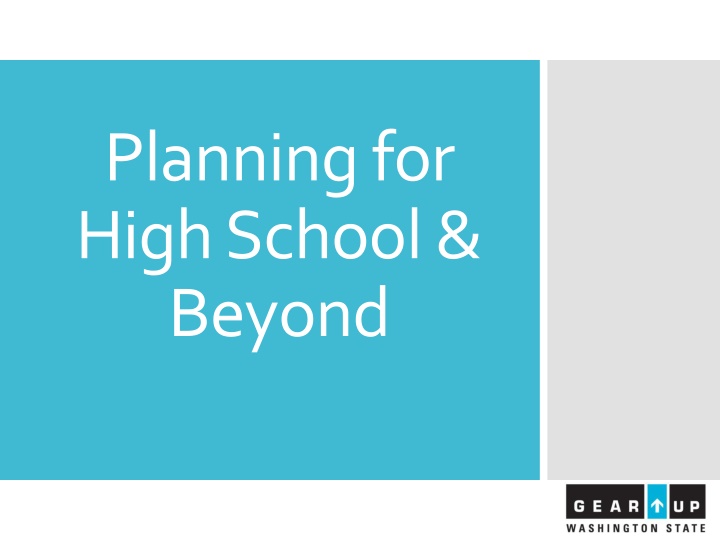
Empower Your Child for Post-High School Success
Help your child set goals for life after high school by planning early for college and career opportunities. Understand the various postsecondary options available, including apprenticeships, military service, and different types of degrees. Explore required courses and graduation criteria to equip your child for their future path.
Download Presentation

Please find below an Image/Link to download the presentation.
The content on the website is provided AS IS for your information and personal use only. It may not be sold, licensed, or shared on other websites without obtaining consent from the author. If you encounter any issues during the download, it is possible that the publisher has removed the file from their server.
You are allowed to download the files provided on this website for personal or commercial use, subject to the condition that they are used lawfully. All files are the property of their respective owners.
The content on the website is provided AS IS for your information and personal use only. It may not be sold, licensed, or shared on other websites without obtaining consent from the author.
E N D
Presentation Transcript
Planning for High School & Beyond
Introductions Our GEAR UP Team includes:
What are your childs goals for life after high school? Help your child use high school to help reach the goals. Encourage your child to plan now for college and career. Sign up for classes that will prepare them for a variety of postsecondary options. Planning for the future
oWhen we say college, we mean any type of education or training after high school. We also use the terms postsecondary education and postsecondary training . oThere are many options for students after high school, including apprenticeships, military, on-the- job training programs, community college certificates, two-year degrees, and four-year degrees. oThe term college includes all of these things. What do we mean when we say college?
Students do better in school and are less likely to drop out if they have a goal and a plan to reach their goal. Encourage your child to research different careers. What education beyond high school is required for those jobs? Plan the classes needed in high school for college. Start exploring interests
WA State HS Graduation Requirements (2019 and Beyond)* Min. Requirements ForWA Public Colleges Recommended ForHighly Selective Colleges Subject 4 credits English 4 credits 4 credits 3 credits (Including math senior year) 3-4 credits Math 3 credits What classes should my child take? 3 credits (2 labs) 2 credits (2 labs) 3-4 credits Science (1 Lab) Social Studies 3 credits 3 credits 3-4 credits World Language 2 credits 2 credits 3-4 credits Arts 2 credits 1 credit 2-3 credits Studentsmusthaveat leasta 2.0 GPA to be admitted to a publiccollegeoruniversityin WA State. For moreinfo:www.k12.wa.us/graduationrequirementsor http://readysetgrad.org/search/node/minimum%20college%20 admissions Health/Fitness 2 credits (.5 Health and 1.5 Fitness)
Encourage your child to: Work with school counselor and GEAR UP to find classes to prepare for their postsecondary and career goals. Take the most challenging courses they can handle, like: Make a plan oAdvanced courses (honors, other rigorous courses). oCareer & Technical Education courses (career prep). oDual credit courses (AP, IB, College in High School, Running Start, CTE Dual Credit).
o Take as many years of math and science as possible. o Take honors, AP, IB, College in HS classes that cover advanced material. Advanced courses o Take electives that let you build skills (orchestra, band, art, metalworking, etc.).
oPreparation for career & postsecondary options. oPersonalized Pathway Requirement. oHigh academic standards. Career prep (CTE) classes oEmerging fields, including: o Health Sciences. o Science, Technology, Engineering & Math (STEM). o Construction.
oRegional high schools for CTE classes. oAttend regular high school half day, Skills Center half day. oSkills Center programs may include: oComputer programming. oFirefighting. oAudio Production. oCulinary Arts. oHealth Care. oConstruction. oMarketing. CTE skills centers
oSTEM = Science, Technology, Engineering and Mathematics. oIncludes Biotechnology, Agriculture Technology, Nanotechnology, several areas of Engineering, and other technologies. CTE STEM oSTEM helps students USE science, technology and math to solve real world problems.
oSome courses give high school AND college credit. oCourses may be at your high school or community college. Dual credit programs oDual credit courses may be College in the High School Courses, Advance Placement (AP), Running Start or others.
oAdvanced Placement (AP) courses can help you earn college credit in high school. oEnd-of-year exam score determines college credit. Dual credit: AP oSome AP courses pair with CTE classes: o Computer Programming. o Commercial Art/Studio Art. o Environmental Science.
oStudents take college level courses in high school. oSchool districts must have inter- local agreements with colleges set up. Dual credit: College In The High School oCollege in HS courses are taught by high school teachers on the high school campus for college credit.
oTake courses at community college while you re a high school student. oPlacement test must be passed to qualify. Dual credit: Running Start oNearly any subject is available (100+ College Level). oPrepare for college or a career. oTalk with your high school counselor for more information.
oTech Prep courses can help you earn college credit in high school. oArticulations needed for HS/College. oMay prepare for an apprenticeship or save college tuition. Dual credit: Tech Prep oCourses may include: o Horticulture. o Environmental Science. o Automotive Technology. o Digital Communications. o Accounting/Business. o Health Science. o Veterinary Medicine.
oSet a plan for high school: Start High School & Beyond Plan. Consider what courses will be in Personalized Pathway Requirement. oDecide which courses you need for: What s next? Graduation requirements. Postsecondary admission requirements. oAsk about advanced, CTE, and dual credit classes. oJoin clubs and participate in sports.
Contact information: [insert counselor/advisor/mentor name] Phone: (xxx) xxx-xxxx E-mail: xxxx@xxxx.xxx Thanks for coming
Topic Next Family Night Date

